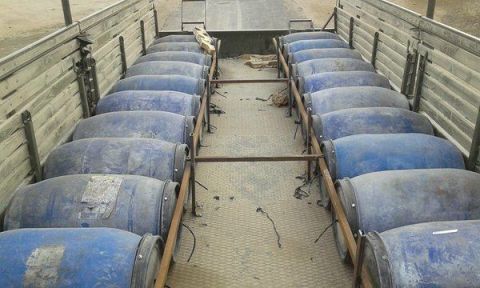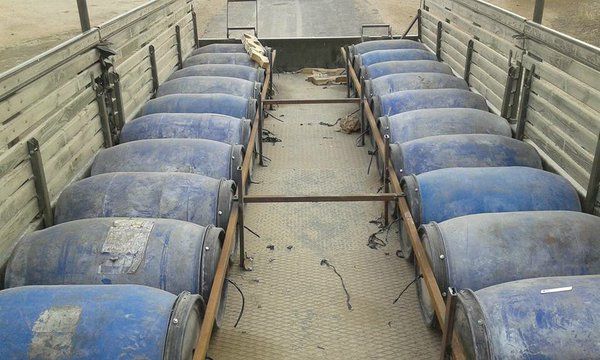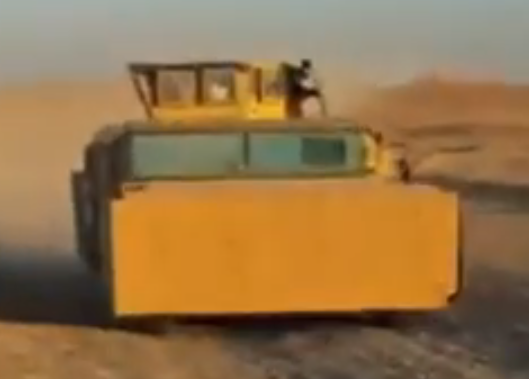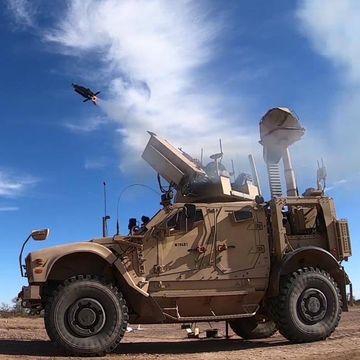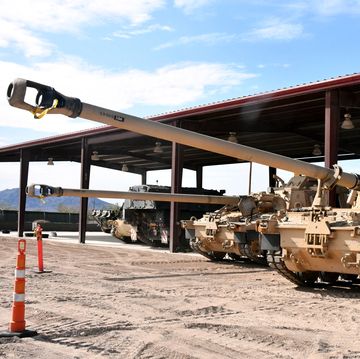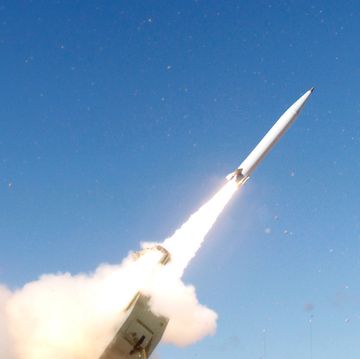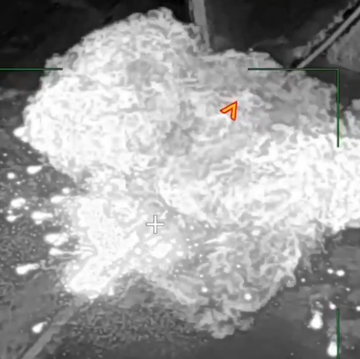The members of ISIS have more in common with the war boys of Mad Max: Fury Road than ruthless violence, desert surroundings, and a yearning to die in combat ("I live, I die, I live again!"). Robert Bunker, a counterterrorism expert at TRENDS Research & Advisory, warns that the latest ISIS tactic is to field car bombs fitted with Mad Max-style improvised armor to carry out suicide attacks on protected targets, and that such tactics might spread to the U.S. and Europe.
The Evolution of the Car Bomb
This new development represents a third wave of vehicle-borne bombs. The first wave consisted of stationary vehicles. That goes all the way back to "Buda's Wagon," a horse-drawn wagon packed with explosives and metal, which anarchist Mario Buda used for an attack on Wall Street that killed 40 people in 1920. Notorious "Type 1" attacks also include the World Trade Towers bombing in 1993 and the Oklahoma City bombing in 1995. I was in London during the Staples Corner bombing carried out by the IRA, and like thousands of people I had my commute disrupted by a white van left on the road by an overpass. Several hours later the van exploded.
The stakes were raised in the 1980s with a new style of vehicle bomb attack, when Shia militias and Hezbollah started using moving vehicles with suicide drivers. Their initial targets were Israeli military convoys, but this sort of "Type 2" attack was employed against the American embassy in Beirut in April 1983, killing 63 people, and also six months later in the attack on a Marine barracks, which killed more than 200 U.S. servicemen. Type 2 tactics have grown more sophisticated, too, with the use of multiple vehicles, sometimes one to break through perimeter defenses and another to attack the installation behind, or with several vehicles attacking at the same time supported by gunman.
Clearly, the best way to stop such an attack is to blow up the vehicle before it can get close enough to do any damage to the target. And that explains the rise of this new kind of vehicular warfare: "Type 3" vehicle bombs that are protected by armor. The vehicles involved in previous attacks have been, for the most part, civilian cars and trucks that are vulnerable even to small-caliber fire. Not so for armored cars. Bunker describes this threat in detail in a new report on "Daesh/IS Armored Vehicle Borne Improvised Explosive Devices."
Bunker calls the devices "armored vehicle-borne improvised explosive devices" (AVBIEDs), and notes reports of their use by ISIS in Iraq and Syria since 2013. Such vehicles include cars and trucks with "applique armor" welded on, as well as armored bulldozers, dump trucks, and even captured armored Hummers and M113 personnel carriers.
ISIS lacks heavy artillery and airpower, but of late it's been using these robust vehicle bombs as a substitute. For example, during fighting in Ramadi, an armored bulldozer led the assault, followed by thirty other vehicles with improvised armor. Ten of these were said to be as being as powerful as the Oklahoma City bomb, which had an explosive equivalent to 5,000 pounds of TNT and leveled entire city blocks.
Now, the tactic is spreading.
"No evidence exists that AVBIED manuals or instructions are shared online," Bunker tells Popular Mechanics. "However the existence of IS videos and still photos of these devices online and in social media suggest that knowledge of AVBIEDs has now widely proliferated amongst insurgent and terrorist groups."
Rolling, Armored IEDs
The AVBIEDs come with different levels of protection depending on the environment and the need to operate covertly. Bunker says the heaviest versions are those that have been seen in Syria and Iraq. "These are full-out armored vehicles like armored bulldozers with explosives on them," he says. "Mad Max vehicles with heavy armor plate"
With such thick armor, they're difficult to stop: "7.62 armor-piercing is probably useless, and .50 caliber is questionable. You have to go for the tracks or wheels." Instead, he recommends using shoulder-fired anti-tank weapons to destroy these vehicles.
These "Type 3" attacks aren't limited to warzones. The lightest level of improvised armor theoretically might be used in future attacks in the U.S. or Europe. Think of covert, interior armor that would not be obvious on the street. Such a vehicle could get close enough so that defensive fire from carbines and handguns would not be enough to stop it. "In such a scenario, the AVBIED has a much greater likelihood of reaching its intended detonation," says Bunker. The most likely use for such a vehicle would be to clear the way for bigger and more conspicuous AVBIEDs following in a second wave.
This isn't the final stage of vehicular warfare. A recent "Jihadi University" video shows ISIS working on a driverless car for terror attacks.
"From a martyrdom perspective, a driverless AVBIED makes little sense," Bunker says. "Where it might make sense is against a heavily defended target in which the driver—even a fanatical one in an armored cab—has little hope of surviving the assault on the way to the target."
Still, there is a counter to every weapon, and it is entirely possible that incoming armored, driverless truck bombs will be identified and taken out at a safe distance by defensive bazooka drones. Mad Max had better raise his game.
